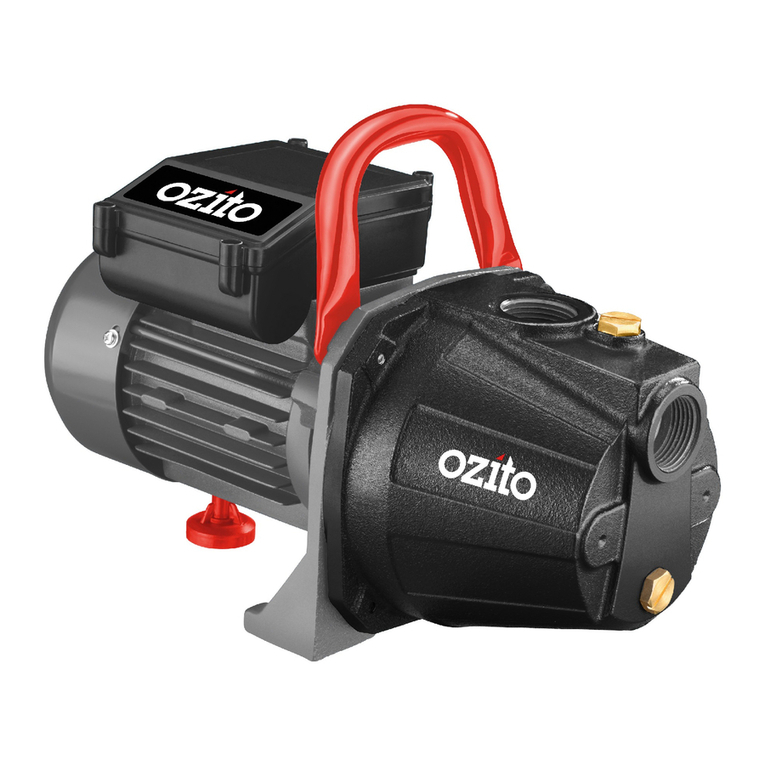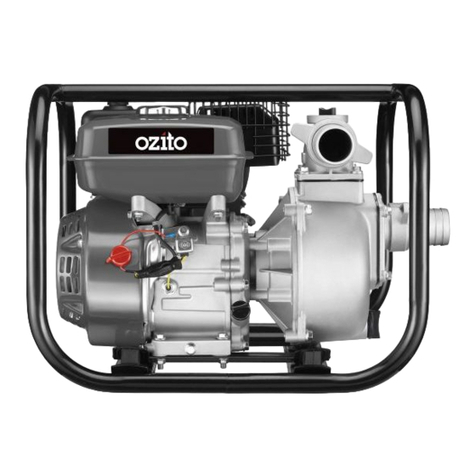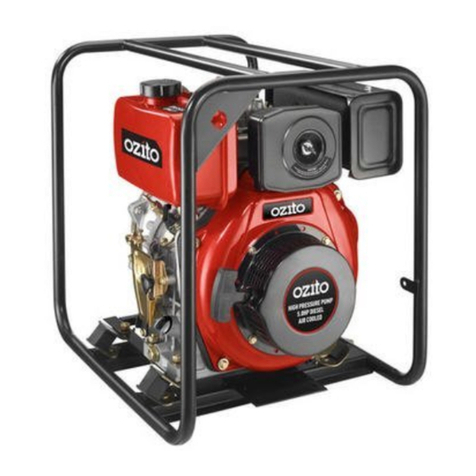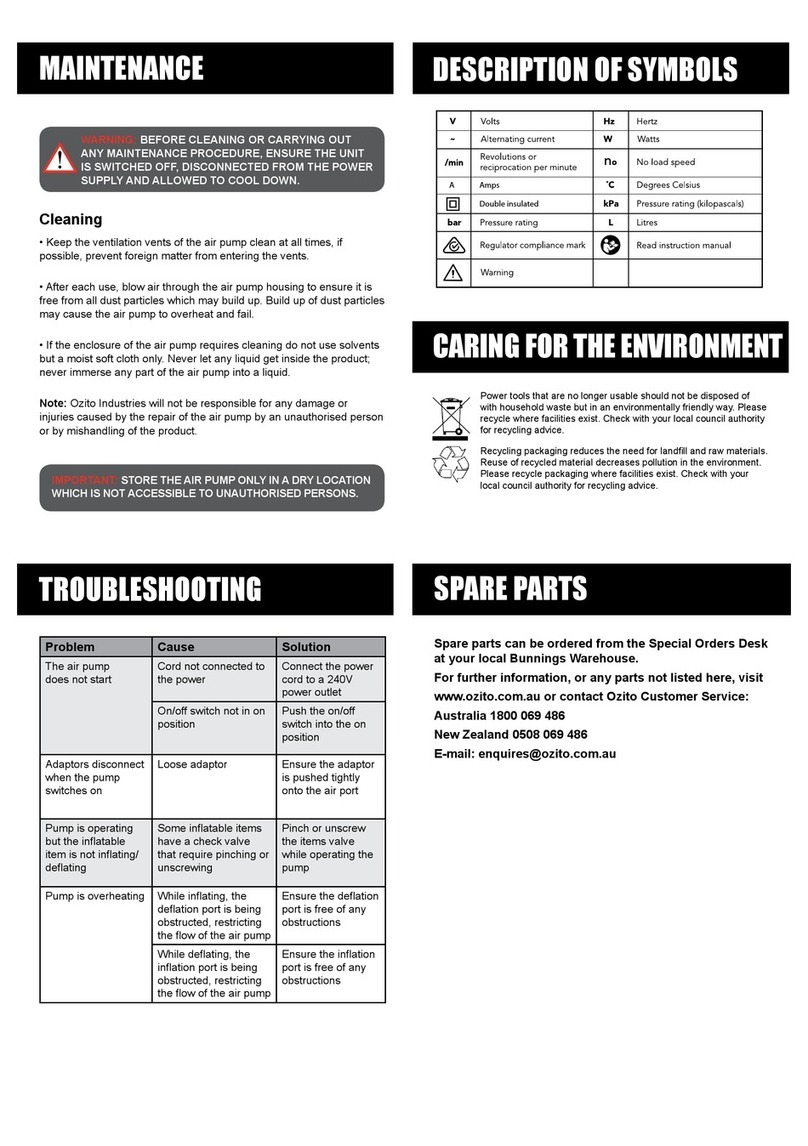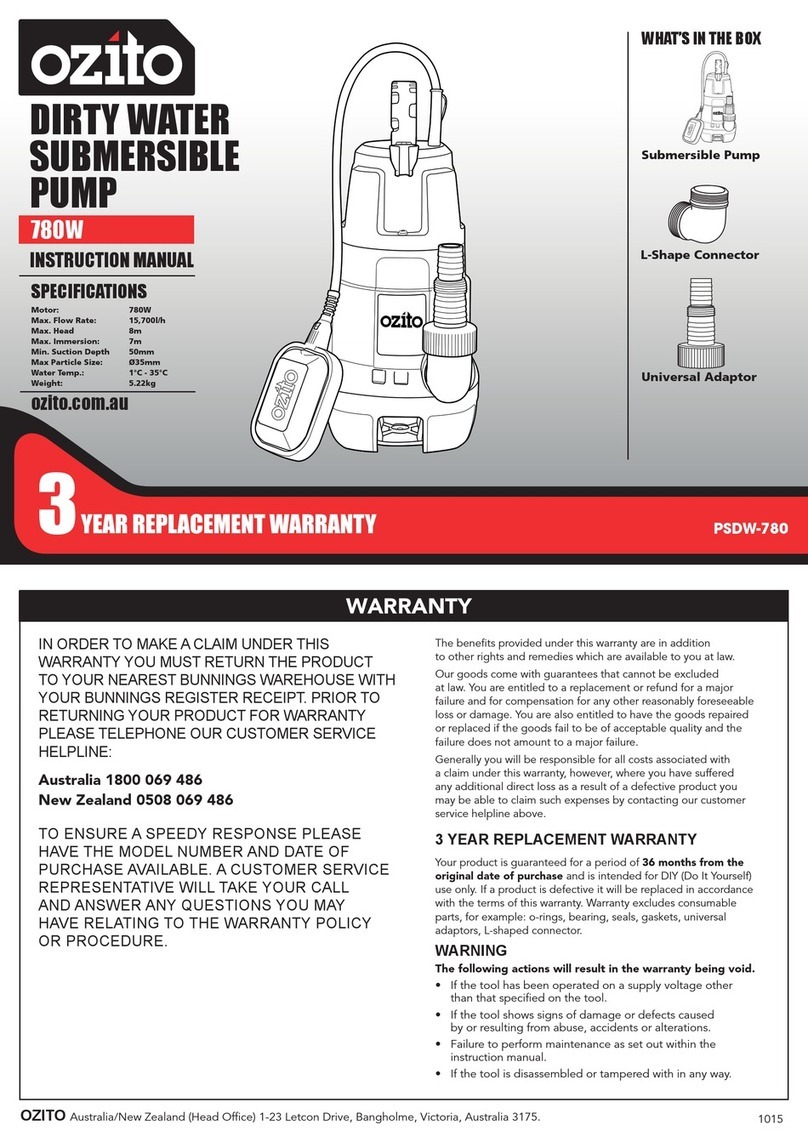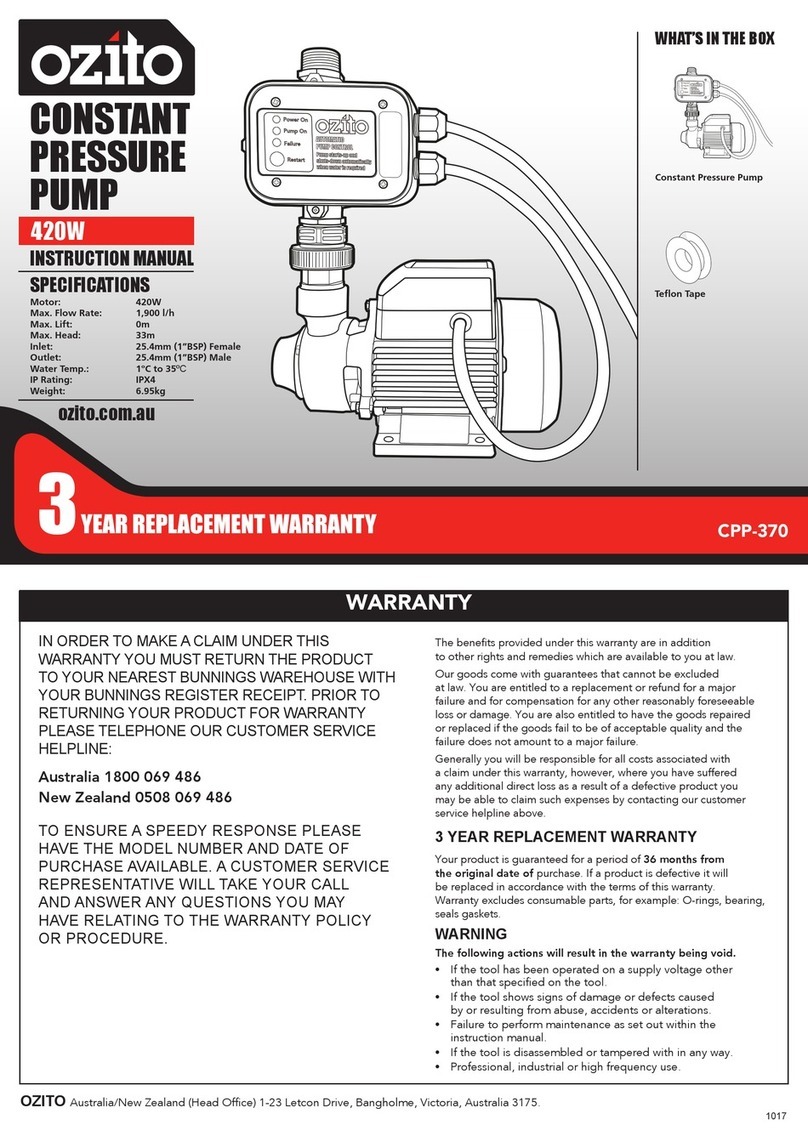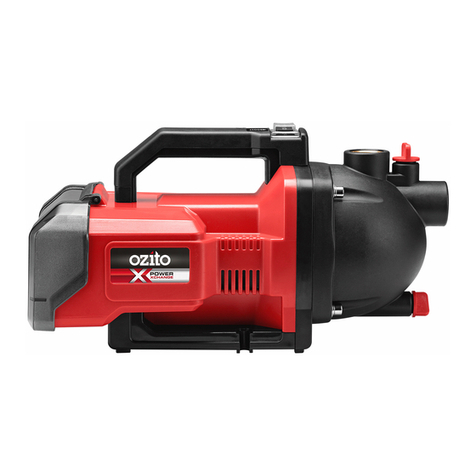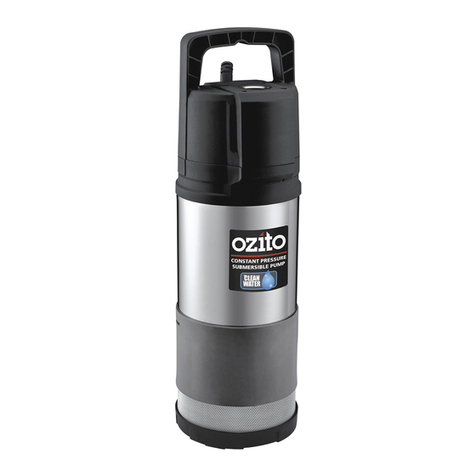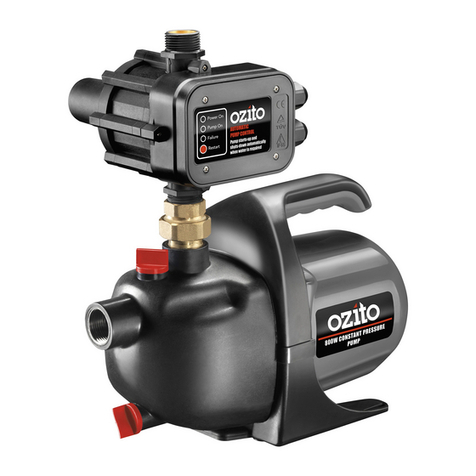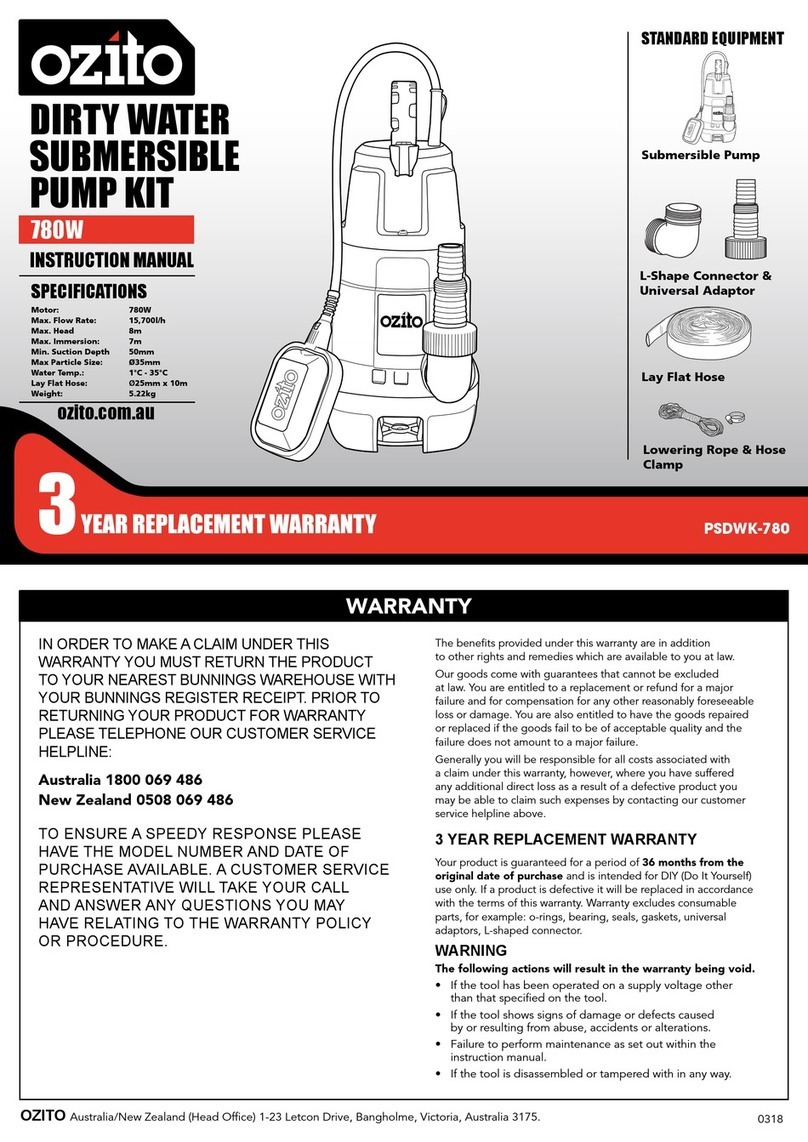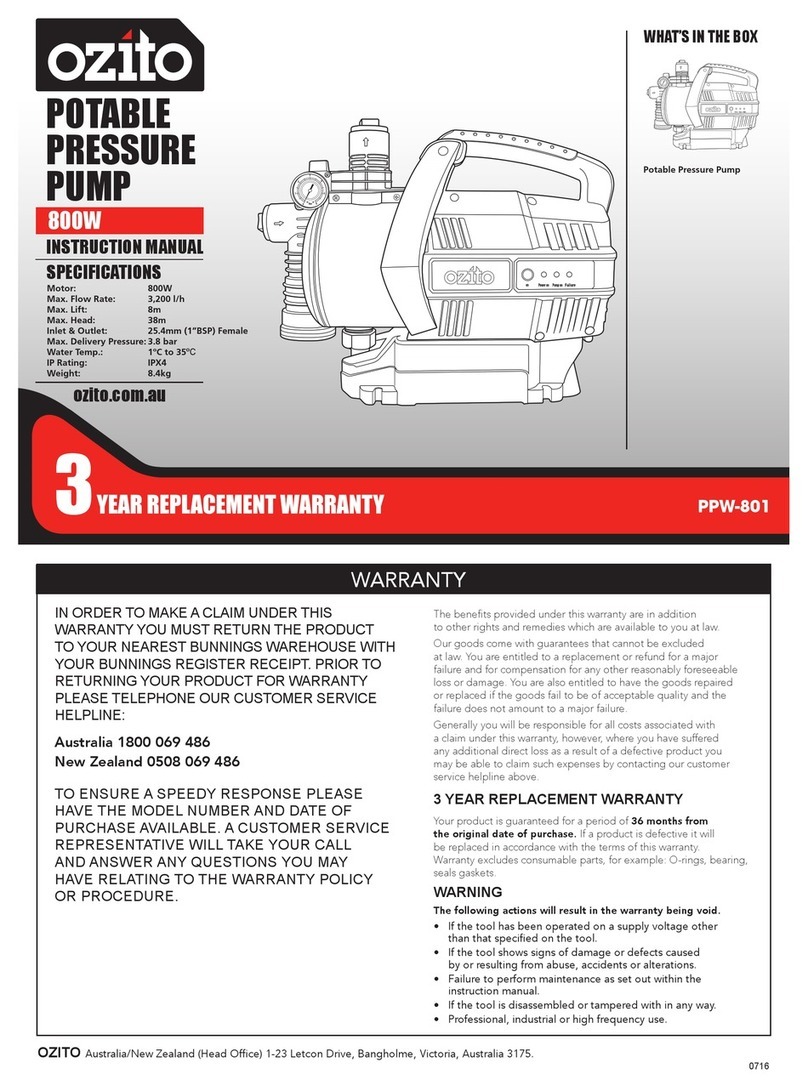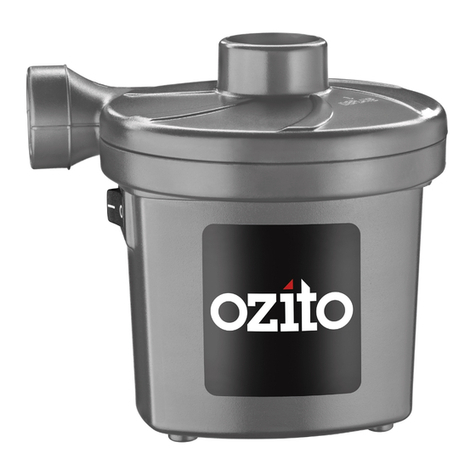
This appliance is not intended for use by persons (including children) with
reduced physical, sensory or mental capabilities, or lack of experience and
knowledge, unless they have been given supervision or instruction concerning
use of the appliance by a person responsible for their safety.
Children should be supervised to ensure that they do not play with the appliance.
• Do not place the hose end against any part of your body when turned on, as this
may infuse air into your blood stream putting your health at serious risk.
• Do not make any alterations to this air pump. Only use the adaptors supplied
with this product.
• Use this product only in accordance with operation instructions included in this
manual.
• It is not suggested that the air pump work continuously for more than 15
minutes.If15minutesofusehasbeenreached,turnitoandletitcoolfor8
minutes before using again.
• If the pump is making abnormal sounds or its temperature is quite high, turn
othepowerstraightawayandletitcoolforatleast10minutesbeforetryingagain.
Improper use may result in damage of the air pump.
• Do not leave unattended and operating. Keep out of reach of children.
• Put the air pump in a dry place if it is not in use for an extended period of time.
• Keeptheairpumpawayfromammableliquidorgas.Donotallowthe
pump to become wet.
• Never put the connector and adaptors into your mouth, ear or eye. They are not
toys.
• Avoid inserting hands into the inlets/outlets of the air pump while it is connected to
power.
• Before using the air pump, always inspect it visually. Do not use the pump if it is
cracked and/or damaged. If the pump is damaged, contact Ozito customer service.
• Neverworkorperformmaintenanceonthepumpwithoutrstmakingsureithas
been disconnected from the mains power.
IMPORTANT:
• The electrical connection must always be made in a dry area. Make sure that
electrical connections are protected from inundations.
• Protect the plug and the power cable from heat, oil or sharp edges.
• Ifdamaged,thepowercablemustbereplacedbyaqualiedelectrician.
AIR PUMP SAFETY WARNINGS
WARNING! Read all safety warnings and all instructions. Failure to follow the
warningsandinstructionsmayresultinelectricshock,reand/orseriousinjury.
Save all warnings and instructions for future reference. The term “power tool” in the
warnings refers to your mains-operated (corded) power tool or battery-operated (cordless)
power tool.
1. Work area safety
a. Keep work area clean and well lit. Cluttered or dark areas invite accidents.
b.
Do not operate power tools in explosive atmospheres, such as in the presence of ammable
liquids, gases or dust. Power tools create sparks which may ignite the dust or fumes.
c. Keep children and bystanders away while operating a power tool. Distractions can cause
you to lose control.
2. Electrical safety
a. Power tool plugs must match the outlet. Never modify the plug in any way.
Do not use any adapter plugs with earthed (grounded) power tools.Unmodiedplugsand
matching outlets will reduce risk of electric shock.
b. Avoid body contact with earthed or grounded surfaces, such as pipes, radiators, ranges
and refrigerators. There is an increased risk of electric shock if your body is earthed or
grounded.
c. Do not expose power tools to rain or wet conditions. Water entering a power tool will
increase the risk of electric shock.
d. Do not abuse the cord. Never use the cord for carrying, pulling or unplugging the power
tool. Keep cord away from heat, oil, sharp edges or moving parts. Damaged or entangled
cords increase the risk of electric shock.
e. When operating a power tool outdoors, use an extension cord suitable for outdoor use.
Use of a cord suitable for outdoor use reduces the risk of electric shock.
3. Personal safety
a. Stay alert, watch what you are doing and use common sense when operating a power
tool. Do not use a power tool while you are tired or under the inuence of drugs, alcohol
or medication.
A moment of inattention while operating power tools may result in serious personal injury.
b. Use personal protective equipment. Always wear eye protection. Protective equipment
such as dust mask, non-skid safety shoes, hard hat, or hearing protection used for appropriate
conditions will reduce personal injuries.
c. Prevent unintentional starting. Ensure the switch is in the o-position before connecting
to power source and/or battery pack, picking up or carrying the tool. Carrying power
toolswithyourngerontheswitchorenergisingpowertoolsthathavetheswitchoninvites
accidents.
d. Remove any adjusting key or wrench before turning the power tool on.
A wrench or a key left attached to a rotating part of the power tool may result in personal injury.
e. Do not overreach. Keep proper footing and balance at all times. This enables better control
of the power tool in unexpected situations.
f. Dress properly. Do not wear loose clothing or jewellery. Keep your hair, clothing and gloves
away from moving parts. Loose clothes, jewellery or long hair can be caught in moving parts.
g. If devices are provided for the connection of dust extraction and collection facilities,
ensure these are connected and properly used. Use of dust collection can reduce dust-
related hazards.
h. Do not let familiarity gained from frequent use of tools allow you to become complacent and
ignore tool safety principles. A careless action can cause severe injury within a fraction of a second.
4. Power tool use and care
a. Do not force the power tool. Use the correct power tool for your application. The correct
power tool will do the job better and safer at the rate for which it was designed.
b. Do not use the power tool if the switch does not turn it on and o. Any power tool that
cannot be controlled with the switch is dangerous and must be repaired.
c. Disconnect the plug from the power source and/or the battery pack from the power tool
before making any adjustments, changing accessories, or storing power tools. Such
preventive safety measures reduce the risk of starting the power tool accidentally.
d. Store idle power tools out of the reach of children and do not allow persons unfamiliar
with the power tool or these instructions to operate the power tool. Power tools are
dangerous in the hands of untrained users.
e. Maintain power tools. Check for misalignment or binding of moving parts, breakage of
parts and any other condition that may aect the power tool’s operation. If damaged,
have the power tool repaired before use. Many accidents are caused by poorly maintained
power tools.
f. Keep cutting tools sharp and clean. Properly maintained cutting tools with sharp cutting
edges are less likely to bind and are easier to control.
g. Use the power tool, accessories and tool bits etc. in accordance with these instructions,
taking into account the working conditions and the work to be performed. Use of the
powertoolforoperationsdierentfromthoseintendedcouldresultinahazardoussituation.
h. Keep handles and grasping surfaces dry, clean and free from oil and grease. Slippery handles and
grasping surfaces do not allow for safe handling and control of the tool in unexpected situations.
5. Service
a. Have your power tool serviced by a qualied repair person using only identical
replacement parts. This will ensure that the safety of the power tool is maintained.
GENERAL POWER TOOL SAFETY WARNINGS-PERSONAL SAFETY
ELECTRICAL SAFETY
WARNING! When using mains-powered tools, basic safety precautions, including the
following, should always be followed to reduce risk of re, electric shock, personal injury
and material damage.
Readthewholemanualcarefullyandmakesureyouknowhowtoswitchthetooloinanemergency,before
operating the tool.
Save these instructions and other documents supplied with this tool for future reference.
The electric motor has been designed for 12V only. Always check that the power supply corresponds to the
voltage on the rating plate.
If the supply cord is damaged, it must be replaced by an electrician or a power tool repairer in order to avoid
a hazard.




